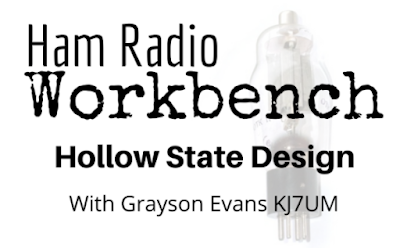Here is another important bit of SSB history. In May 1960, Joe Galeski W4IMP published an article in QST describing his super-simple SSB transmitter. While Tony Vitale's "Cheap and Easy" rig was a phasing design, Joe came up with a filter rig. He built USB filter at 5775 kc. With it, he ran a VXO at around 8525 kc. This put him on 20 meter USB.
Here is the QST article: http://marc.retronik.fr/AmateurRadio/SSB/A_3_tubes_filter_rig_%28SSB%29_%5BQST_1960_5p%5D.pdf
In discussing how to put this rig on other bands, Joe got the sideband inversion question exactly right:
Thank you Joe!
Joe even provides an comment that seems to capture an important element of the homebrew SSB ethos. Joe homebrewed his filter, but he mentioned the possibility of using a store-bought filter:
That's the spirit Joe!
Along the same lines, Jim Musgrove wrote in Electric Radio:
Having built Lew McCoy's Mate for the Mighty Midget receiver (which also used just three tubes), I can't help thinking that an IMP-ish transmitter would be an excellent complement to the Mate for the Mighty Midget.
Jim Musgrove K5BZH knew Joe Galeski and wrote about him in the January 1992 issue of Electric Radio. Jim wrote that Joe was an optometrist by profession. When OE1FF wanted to know the cost of building an IMP, Joe Galeski boxed up the original and sent it to him. FB Joe.
In December 1961 Joe Galeski published a QST article describing a transistorized version of the IMP -- this rig ran on 15 meters. K5BZH wrote that Joe later published an article about a small, solid-state transceiver, appropriately called "The Shrimp."







































